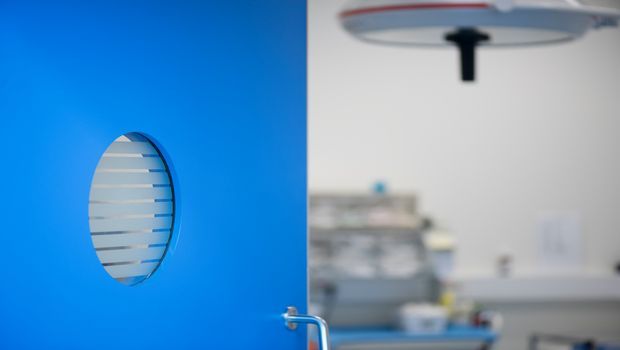Minimizing Operating Room Traffic May Improve Patient Safety by Lowering Rates of SSIs

A safety team at a Canadian hospital determined there was too much traffic in and out of the operating room (OR) during total joint replacement procedures. So they implemented several strategies to reduce traffic, which may have contributed to a decrease in orthopedic surgical site infections (SSIs), according to study results presented today at the 2016 American College of Surgeons National Surgical Quality Improvement Program (ACS NSQIP®) Conference.
OR staff at Peace Arch Hospital (Fraser Health) in White Rock, British Columbia, launched a Comprehensive Unit-Based Program (CUSP) two years ago to improve patient and staff safety, said lead study author Susann Camus, MA, MPH. The team asked nurses, surgeons, anesthesiologists, and others who spend at least 60 percent of their time in the OR to complete a survey about what they thought caused patients harm and what to do to prevent it, Camus said. Nurse and surgeon survey participants said that too much traffic in the OR caused harm.
Jason Forbes, MD, a general surgeon at Peace Arch, a community hospital with 20 surgeons said that the hospital staff also learned from its NSQIP data that they had an excessively high rate of wound infections from orthopedic operations like knee and hip joint replacements, which are frequently performed in their hospital serving an aging population. "Those SSIs were a high outlier and an area that needed urgent correction,” said Forbes, the hospital's NSQIP Surgeon Champion.
The team conducted the study over two days in November 2014. Two nursing students did a manual count of door openings during nine total joint replacement operations and one revision procedure. They counted between 42 and 70 door openings per operation from incision time to joint capsule closure time. Operations averaged 75 minutes. Reasons for entering and exiting the OR during operations included retrieving charts, instruments, or equipment, and taking a break.
Following these results, Camus said the CUSP team brainstormed ways to reduce door openings. Key changes included stopping all traffic in and out of the OR between total joint capsule opening and closure, communicating by phone, and increasing the use of templates to identify implant size prior to each operation. A sign on the OR door also reminds staff to minimize traffic and asks them to record why they are entering the OR during an operation. Camus said subsequent traffic audits taken every six months indicated a significant reduction in OR traffic from between 42 and 70 door openings to 3.2 door openings per case. This intervention may have contributed to a decrease in orthopedic SSIs from 2.8 percent to 2.1 percent since traffic control was implemented, according to study authors.
Camus said the CUSP team has since shared their study results across Fraser Health’s 11 surgical sites. The project was significant because everyone on the team contributed to identifying and testing solutions to reduce OR traffic and cooperated to put solutions into place. The team will continue to conduct regular audits every six months. Forbes said they want to eventually expand these practices to other services, including general surgery, urology, and gynecology.
“The idea is to be very mindful to make minimal traffic an everyday practice, and it is very close to that now,” Camus said.
In addition to Camus and Forbes, other study authors are: Alexandra Kite, RN, CPN; Carline Tough; Paul Bennett; Shelley Dalzell; Gunter Heinz; Laura Holmes; and Natalie Koblizka.
Source: American College of Surgeons
Together We Rise: Why AORN Expo 2025 Is a Must for Every Perioperative Nurse
March 31st 2025From April 5 to 8, 2025, thousands of perioperative nurses will gather in Boston for the 2025 AORN Global Surgical Conference & Expo—a transformational experience designed to elevate nursing practice, build lifelong connections, and advance surgical care.
Vet IP Roundtable 2: Infection Control and Biosecurity Challenges in Veterinary Care
March 31st 2025Veterinary IPs highlight critical gaps in cleaning protocols, training, and biosecurity, stressing the urgent need for standardized, animal-specific infection prevention practices across diverse care settings.